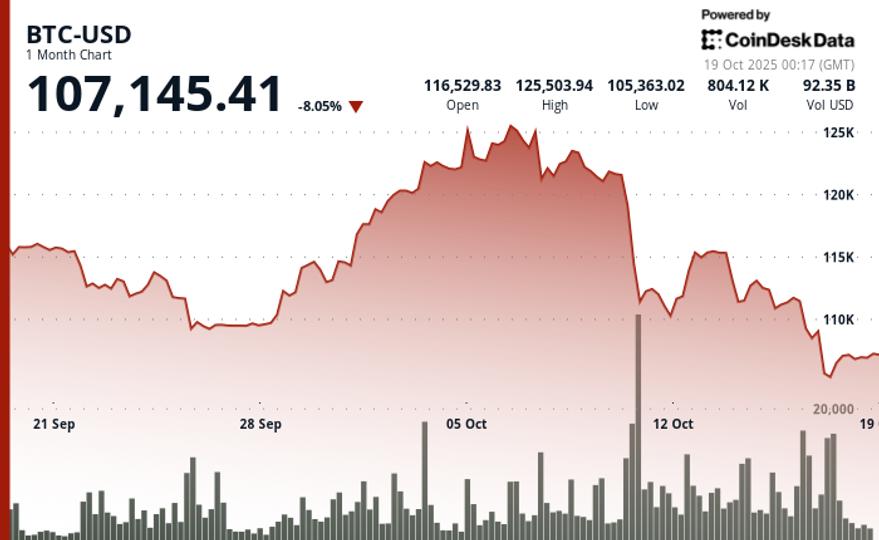October’s oscillations did not break the cycle, says Alex Thorn, head of research at Galaxy Digital.
The note was first sent to subscribers of Galaxy Research’s Weekly Research Brief and then reproduced on X.
Thorn says the Oct. 10 selloff began with high leverage that reduced order books, then worsened when automatic deleveraging of exchanges capped some market makers’ shorts and reduced liquidity at its worst. He cites about $19 billion in liquidations as bitcoin fell from an Oct. 6 all-time high near $126,300 to an intraday low of around $107,000, with ether falling from around $4,800 to around $3,500 before markets stabilized over the weekend.
Risk appetite has eased again as macroeconomic nervousness resurfaces. Thorn points to weak chip stocks, the Federal Reserve governor’s hawkish turn, renewed concerns from regional banks and geopolitical noise. Classic markers of risk aversion have strengthened the tone, he notes, with gold and silver setting new records and the 10-year Treasury yield falling below 4%.
It also points to a crypto-specific drag: digital asset treasury companies have gone cold. He says that with stock prices falling in this cohort, there are fewer price-insensitive buys to deploy in crypto, adding to near-term fragility, even after the initial washout.
In the medium term, however, Thorn remains constructive and highlights three strengths that he believes can propel the next step upwards.
The first is AI capital spending. He describes the current wave as a real-economy investment cycle led by cash-rich incumbents — hyperscalers, chipmakers and data center operators — bolstered by significant U.S. policy support, rather than a replay of a purely speculative dot-com bubble. Corporate budgets and the government’s position, he says, suggest a long road ahead.
Second, there are stablecoins. Thorn points out that dollar-pegged tokens continue to gain traction as payments accelerate, broadening participation, deepening liquidity, and anchoring more activity on public chains. He believes these plumbing effects can support the ecosystem even when price action deteriorates.
The third is tokenization. According to Thorn, the movement of real-world assets and elements of traditional market infrastructure on-chain is moving from pilot to implementation, creating new demand for block space and core assets that secure, route and settle this activity. Thorn says the transition benefits platforms linked to this flow.
In this context, he remains positive about the “digital gold” role of Bitcoin, despite persistent doubts about fiscal and monetary prudence. He also sees a favorable setup for majors like ETH and SOL related to stablecoin usage and tokenization, although near-term rallies are likely to stall below previous highs.
The short-term message is one of caution: respect reduced liquidity, post-crash psychology and a “worry wall” mood. The medium-term message is one of resilience: three favorable factors are in place, he says, to maintain the upward trend once the markets have finished digesting the shock.




